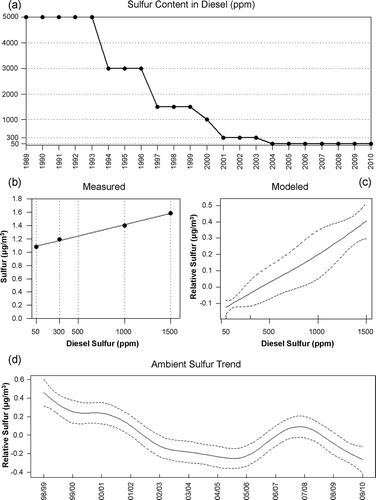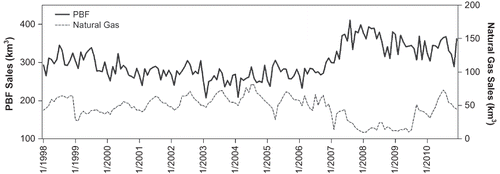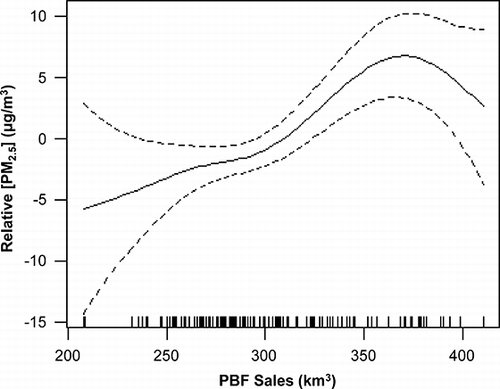Figures & data
Figure 1. PM2.5 monthly and annual concentration time series. The dashed line at 20 μg/m3 represents the new Chilean Ministry for the Environment's annual PM2.5 standard.
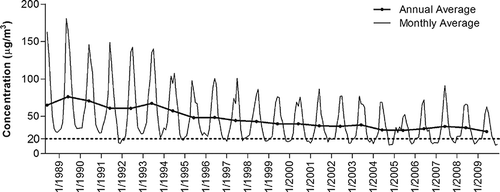
Figure 2. PM2.5 model results. (a) Annual trend of PM2.5 adjusted for month, day of the week, wind speed, relative humidity, and temperature. (b–d) Nonlinear relationships between PM2.5 and wind speed, relative humidity, and temperature, respectively. (e) Monthly variability of PM2.5 with respect to January. (f) Day-of-the-week variability of PM2.5 with respect to Sunday.
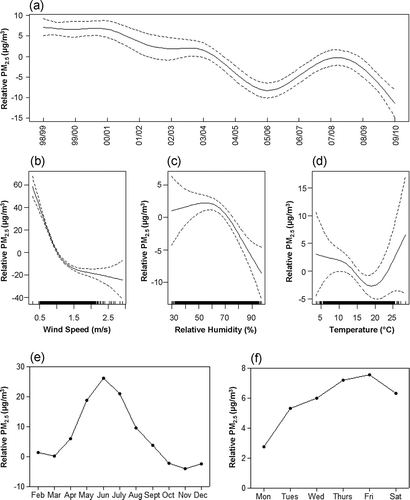
Figure 3. Molar ratios, Pearson correlation coefficients, and trends adjusted for month, weekday, temperature, wind speed, and relative humidity for (a) lead and (b) bromine.
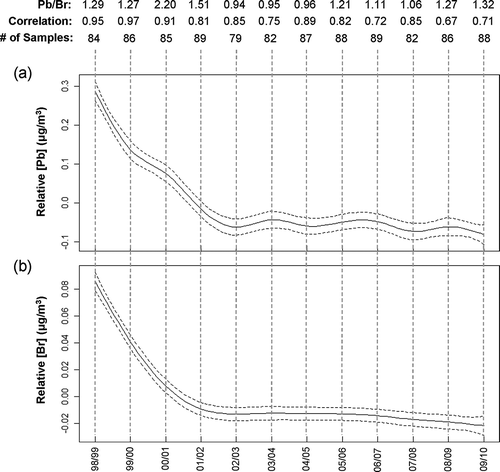
Figure 4. Impact of diesel sulfur content reduction on ambient sulfur levels. (a) Maximum allowable sulfur content in diesel for 1989–2010. (b) Average ambient sulfur versus diesel sulfur content. (c) Graph of the meteorology-adjusted relationship between 1998 and 2010. (d) Meteorology-adjusted ambient sulfur concentration trends.
